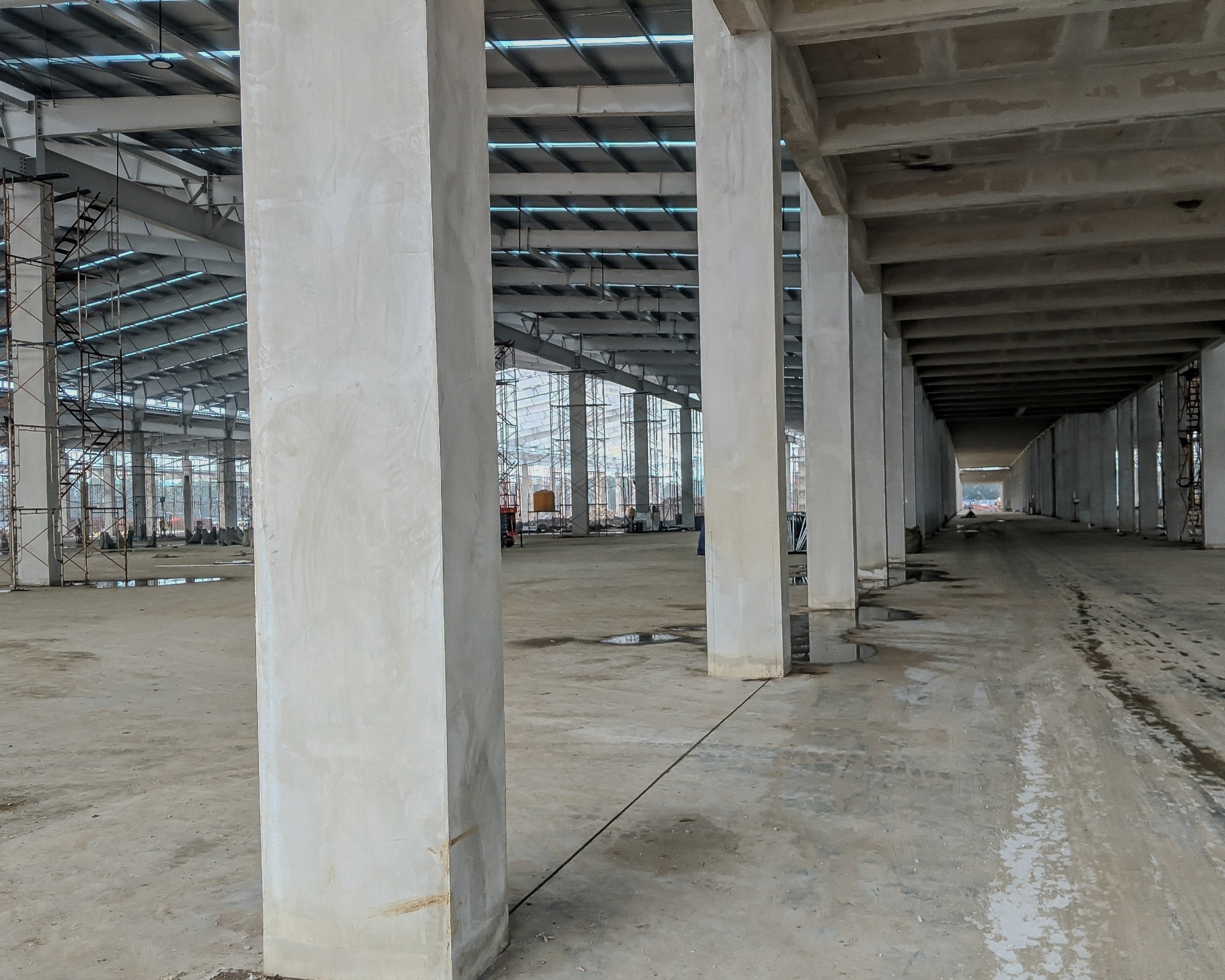A study has revealed how 3D-printed concrete columns with GFRP reinforcement perform under pressure - offering new insights into structural design, durability, and the future of automated construction.

Study: Performance of 3D-printed concrete columns with GFRP rebars under axial compression. Image Credit: Faiz_99/Shutterstock.com
Published in Scientific Reports, the study compares these 3D-printed columns with traditionally mould-cast counterparts of the same dimensions to evaluate how both the printing process and composite reinforcement impact structural behavior.
The results shed light on the potential and current limitations of 3D concrete printing (3DCP), particularly in terms of improving sustainability and construction efficiency.
Challenges in 3D Concrete Printing
3DCP enables the layer-by-layer fabrication of complex forms, reducing material waste and labor demands. Its ability to produce customized geometries is a key advantage over traditional construction techniques. However, the integration of reinforcement remains a major hurdle.
Printed concrete tends to be brittle, with low tensile strength, which complicates the embedding of reinforcement within the layered structure. While GFRP reinforcement offers advantages such as corrosion resistance and high strength-to-weight ratios, its performance within 3D-printed elements hasn't been fully optimized. This highlights a clear need for more effective reinforcement approaches tailored to the unique characteristics of 3DCP.
Permanent Formwork and Testing Approach
To address these challenges, the researchers proposed a method that tackles both reinforcement integration and the elimination of temporary formwork. Their solution involved using a 3D-printed hollow concrete shell as permanent formwork, into which a GFRP-reinforced cage was inserted before being filled with conventionally cast concrete.
For testing, square concrete columns were fabricated using a concrete mix designed specifically for 3D printing. This mix was used across both the printed and mould-cast samples to ensure comparability. The printed columns featured hollow channels for GFRP longitudinal bars and steel stirrups.
Fabrication was carried out using a desktop concrete 3D printer, with strict control over printing parameters to maintain accuracy and stability. Axial compression tests were conducted using a U-Test Compression Testing Machine, with continuous monitoring of load and displacement up to failure. These tests allowed for a direct comparison of performance between the 3D-printed and mould-cast columns.
Performance Results: Load Capacity and Failure Behavior
The results revealed that the 3D-printed columns exhibited significantly lower load capacities - roughly half - compared to the mould-cast versions. The long and short mould-cast columns reached peak loads of 2137 kN and 2429 kN, respectively, while the printed versions managed 1412 kN and 1014 kN. This reduction was primarily due to weak bonding between layers, leading to delamination and shell separation.
Slenderness also played a clear role: shorter columns showed higher axial capacities in both construction methods. Interestingly, the 3D-printed columns failed gradually, with outer layers peeling away instead of collapsing suddenly. This progressive failure mode could offer advantages in scenarios where energy dissipation and controlled deformation are important.
Another key finding was that existing design standards, including Australian Standard AS 3600 and ACI 440.1R-15, overestimated the performance of the 3D-printed specimens. This suggests current models don’t fully account for the behavior of layered concrete and highlights the need for revised design guidelines specific to 3DCP.
Implications for Construction Applications
This research points to promising applications of 3DCP in modular construction and fast-deployable structures. The integration of GFRP within printed concrete shows potential for producing lightweight, corrosion-resistant elements that are easier to transport and assemble, without compromising durability.
Click here to download a free PDF copy of this page
The observed progressive failure modes suggest relevance for structures that must withstand dynamic loads, such as seismic-resistant buildings or protective barriers, where ductile failure is preferable to sudden collapse. Furthermore, the ability to produce customized, intricate forms with less waste aligns well with industry goals for more sustainable construction.
Conclusions and Future Directions
This study provides valuable insights into the interaction between 3D printing and composite reinforcement under structural loads. While printed columns currently lag behind mould-cast ones in strength due to interlayer weaknesses, the gradual failure behavior and reinforcement strategy mark important steps forward for 3DCP in structural applications.
Future research should focus on improving interlayer bonding, optimizing mix designs for layered printing, and exploring hybrid reinforcement systems. Overcoming these challenges will be crucial for transitioning 3DCP from experimental settings to mainstream construction.
Journal Reference
Bates, R., Aslani, F. (2025). Performance of 3D-printed concrete columns with GFRP rebars under axial compression. Sci Rep 15, 39419. DOI: 10.1038/s41598-025-22990-4, https://www.nature.com/articles/s41598-025-22990-4
Disclaimer: The views expressed here are those of the author expressed in their private capacity and do not necessarily represent the views of AZoM.com Limited T/A AZoNetwork the owner and operator of this website. This disclaimer forms part of the Terms and conditions of use of this website.